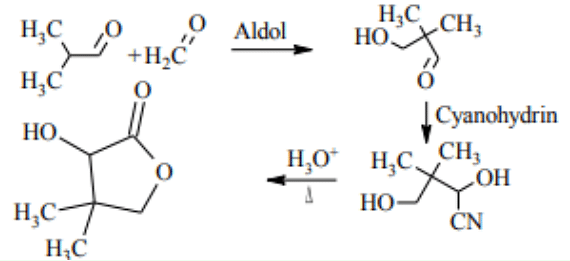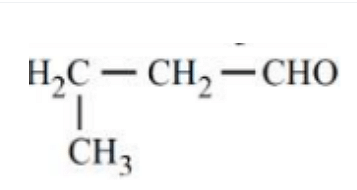Question:
Compound $( X )$ undergoes following sequence of reactions to give the Lactone $( Y )$

Compound $( X )$ undergoes following sequence of reactions to give the Lactone $( Y )$


Updated On: Sep 12, 2024
Hide Solution
Verified By Collegedunia
The Correct Option is C
Solution and Explanation
The correct answer is (C) :

Was this answer helpful?
1
12
Top Questions on Haloalkanes and Haloarenes
- What will be the reactivity order of following compounds towards electrophilic substitution reaction ?

- JEE Main - 2024
- Chemistry
- Haloalkanes and Haloarenes
- Which of the following sets of elements can be detected by Lassaigne's Test ?
- JEE Main - 2024
- Chemistry
- Haloalkanes and Haloarenes
- Which of the following statements is correct about freons?
- JEE Main - 2023
- Chemistry
- Haloalkanes and Haloarenes
- A compound A on reaction with X and Y produces the same major product but different by product a and b Oxidation of a gives a substance produced by ants X and Y respectively are :

- JEE Main - 2023
- Chemistry
- Haloalkanes and Haloarenes
- CH3CH2-Br \(\overrightarrow{Acetone}^{NaI}\) CH3-CH2-I+NaBr
Which of the following statement is correct ?- JEE Main - 2023
- Chemistry
- Haloalkanes and Haloarenes
View More Questions
Questions Asked in JEE Main exam
- An electron in the 5th excited state of He+ atom moves to the 1st excited state. Find the number of possible spectral lines formed.
- JEE Main - 2024
- Atomic Spectra
- In given circuit, reading of voltmeter is 1 V, then resistance of

- JEE Main - 2024
- Heat Transfer
- We are given with three NaCl samples and their Van't Hoff factors. Which is correct option ?
Sample Van't Haff Factor Sample - 1 (0.1 M) \(i_1\) Sample - 2 (0.01 M) \(i_2\) Sample - 3 (0.001 M) \(i_2\) - JEE Main - 2024
- Solutions
- Complementary stand of DNA ATGCTTCA is:
- JEE Main - 2024
- Hydrogen Bonding
- Which is following compound is easily attacked by electrophile?
- JEE Main - 2024
- Organic Chemistry- Some Basic Principles and Techniques
View More Questions
JEE Main Notification
 JEE Main 2025 Chapter-wise Question Papers Available, Download HereSep 09, 2024
JEE Main 2025 Chapter-wise Question Papers Available, Download HereSep 09, 2024JEE Main 2025 chapter-wise question papers, along with answer keys and expert solutions available here. Download the PDFs for better preparation on our website.
Concepts Used:
Haloalkanes and Haloarenes
The hydrocarbons such as Haloalkanes and Haloarenes are the ones, in which one or more hydrogen atoms are replaced with halogen atoms. The main difference between Haloalkanes and Haloarenes is that Haloalkanes are derived from open chained hydrocarbons, also called alkanes, and Haloarenes are derived from aromatic hydrocarbons.
- Haloalkanes have hydrocarbons made up of aliphatic alkanes and one or more hydrogen atoms replaced by halogens (elements such as Chlorine, Bromine, Fluorine, Iodine, etc.) whereas, haloarenes consist of aromatic ring or rings and one or more hydrogen atoms replaced by halogens.
- In haloalkanes, the halogen atom is attached to the sp3 hybridized carbon atom of the alkyl group whereas, in haloarenes, the halogen atom is attached to the sp3 hybridized carbon atom of the alkyl group.
- Haloalkanes are saturated organic compounds where all the chemical bonds are attached to the carbon atom with single bonds and a single carbon atom is attached to the Halogen atom, whereas, the haloarenes differ from Haloalkanes by their method of preparation and properties.
- Haloalkanes are made by aliphatic alkanes by the process of free radical halogenation, whereas, haloarenes are made by direct halogenation of aromatic rings.
- Haloalkanes are odorless compounds, whereas, haloarenes have a sweet odor.
- Haloalkanes precipitate in SN2 substitution reactions, whereas, haloarenes do not precipitate in SN2 substitution reactions.
- Example of haloalkanes is CH3Cl (Methyl Chloride) and CH3CH2Br (Ethyl Bromide) and the example of haloarenes is Chlorobenzene, Bromobenzene.






